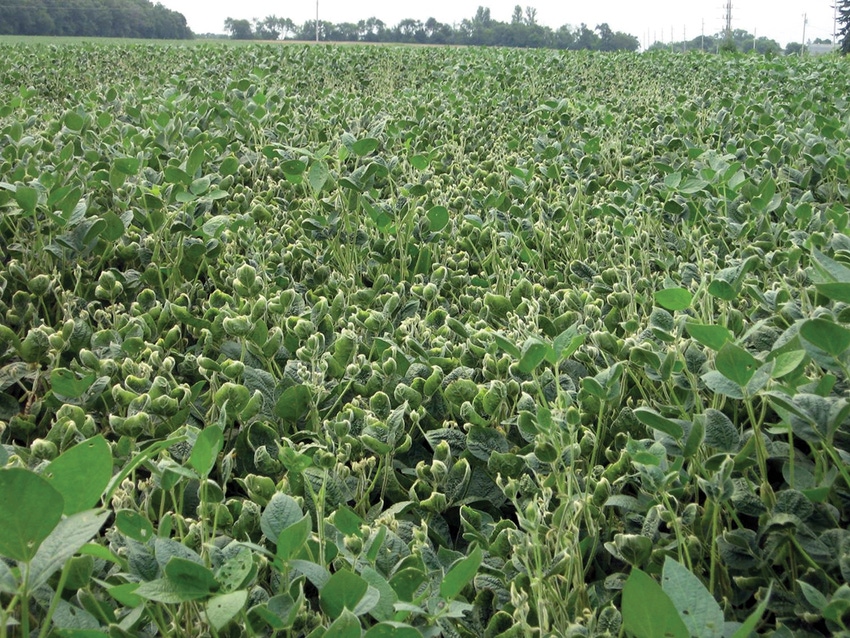
Going into 2017, there are new, and pending, regulations for both dicamba and 2,4-D.
The hot topic, though, is “definitely” the dicamba drift issues that hammered 2016 Mid-South crops, says Jason Davis, University of Arkansas application technologist. “If the new regulations get through the Arkansas legislature, it will really impact applications across the state.”
Growers properly following the new regulations will be key to preventing a repeat of the 2016 dicamba drift problems. Davis, who spoke at the Jan. 6 Tri-State Soybean Forum in Dumas, Ark., provided a run-down of what growers and custom applicators can expect.
“To begin with, anyone applying any of the new herbicide technologies in 2017 will have to complete an online ‘New Herbicide Technology Certification’ that will be available through the Cooperative Extension Service in the coming weeks. Applicators will learn through the certification that in Arkansas all dicamba formulations are restricted between April 15th and Sept. 15 except for BASF’s Engenia formulation.”
Equipment/environment
What about equipment restrictions?
“The only nozzle approved to spray Engenia is the TeeJet nozzle TTI 11004. In addition to this nozzle restriction, the equipment speed cannot exceed 15 miles per hour. This is significantly slower than many of our applicators currently travel. Additionally, boom height cannot exceed 24 inches above the crop canopy.”
Environmental restrictions?
“Arkansas regulations also state that wind speed must be between 3 and 10 miles per hour. Any time the wind speed is higher than the 10 miles per hour celling, the sprayer has to sit idle if dicamba is in the tank.
“Regulations require a 100-foot buffer zone around the entire field of application and a downwind buffer of a quarter-mile to any sensitive downwind vegetation.”
Education
How can growers get education about these changes?
“In addition to the required online certification, multiple meetings will be held throughout the state. Applicators and producers should look attend their local Extension winter meetings for updates from specialists.
“We also have five sprayer clinics to be held along the Arkansas Delta. The first one is Feb. 22 in McGehee at the Men’s Center. On Feb. 23, there will be a clinic at the Rice Research and Extension Center in Stuttgart. The third one will be held March 7 at Arkansas State University in Newport. On March 8, the clinic will be at the Marianna Lon Mann facility. The last one will be March 9 at the Green County fairgrounds in Paragould.
“All the clinics start at 9 a.m. and go through lunch. They will focus on new regulations and available sprayer technology to help meet the challenges of this season.
“In addition to meetings, several publications should soon be out from our specialists to make sense of new regulations and help applicators make good decision with the new technology.”
Clean-outs
What about spray equipment clean-outs?
“There’s a lot of concern from applicators on dicamba and clean-out. Non-traited soybeans are extremely sensitive to any form of dicamba exposure. Beyond the drift concern with these new formulations is the concern of tank contamination. Our researchers have shown that less than 1/1,000X rate can severely damage soybean yield. Sloppy cleanout procedures will easily leave this much in the tank to cause damage in subsequent applications.”
To accomplish a proper clean-out, Davis offered some pointers:
Finish spraying with an empty tank.
“Do not begin cleanout procedure with full strength solution in the tank and booms.”
Clean-out immediately after dicamba is sprayed.
Applicators are required to run a triple rinse.
“The more water you can move through the equipment during rinses, the better.”
A minimum requirement 10 percent of the total tank volume must move through the system all three times.
During the second rinse, the label requires the use of a ‘strong detergent.’
Opening the boom ends and flushing them is critical.
Do not forget to remove and clean nozzles, strainers, filters — anything that could be a choke point for product to get trapped.
Davis acknowledged that “doing all that is very time prohibitive. Depending on the rig, clean-outs may be a one- to two-hour process when swapping between chemistries. That’s why there’s a lot of commercial applicators planning to dedicate equipment to dicamba.
“We anticipate seeing damage in the state because people don’t clean out their spraying equipment properly. Thinking ‘I can get by just doing what I used to’ is not going to work with new 2,4-D and dicamba technologies. If that lesson hasn’t already been learned, it won’t take long for damage to show up.”
Protect what’s working
It’s imperative that using the new technologies not damage the effectiveness of those still working on pigweeds.
“It is also worth mentioning that currently the Liberty trait system works well,” said Davis. “When applying Liberty, applicators should not be using the same nozzles that are required with new dicamba or 2,4-D formulations.
“The temptation will be for producers to buy the new required nozzles and use them with products they shouldn’t. The Liberty system requires a much smaller droplet size because it needs higher levels of coverage.
“If we don’t provide the proper coverage, there will be eventually be escapes and the whole system will be in jeopardy. We should help protect the Liberty system by using the proper nozzles that produce a ‘coarse’ to ‘very coarse’ droplet.”
About the Author(s)
You May Also Like




